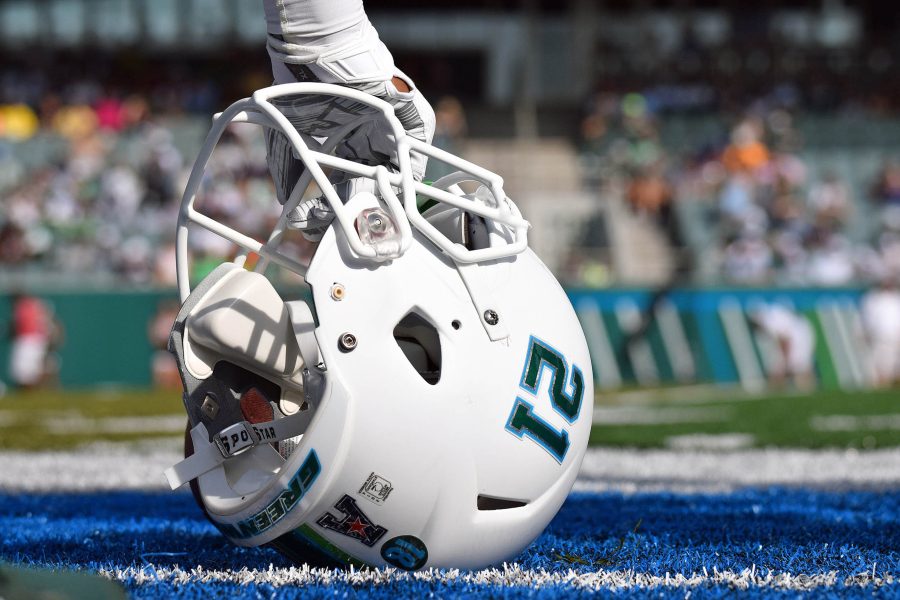Technological advancements in science and health have drastically affected the way we regulate athletics. Our sensitivity to concussions and heart problems is light-years away from what it once was. The old-school mentality of “rub some dirt in it” is fading in a sense. Health is taking precedence in high school and collegiate sports across the country as programs continue to implement stronger standards in their concussion and safety protocols.
Beyond that, medical sensitivity is even pouring into the NFL. Well, somewhat. More like trickling over.
The recent Blockbuster “Concussion,” starring Will Smith, depicts Dr. Bennet Omalu, the man who discovered that severe brain damage resulted from repeated concussions in football. The medical term for this kind of damage is called Chronic Traumatic Encephalopathy, better known as CTE. According to the Boston University CTE Center, “The brain degeneration is associated with memory loss, confusion, impaired judgement, impulse control problems, aggression, depression, and eventually, progressive dementia.”
While “Concussion” brought about a surface level of awareness to CTE, many critics scrutinized the film for cutting a substantial amount of material after feeling pressure from the NFL and their conglomerate buddies. Even ESPN withdrew from their “Frontline” a concussion investigation report. Apparently the Disney Corporation didn’t want to sour their relationship with the NFL considering they have a $9.2 billion, eight year contract with them — kind of a conflict of interest.
Every time the NFL receives bad press they are quick to silence the mouths of the accusers. In the past 10 years, the muffled voices of protest have gained clarity in their cries for attention. The negative health effects were first recognized by most after the tragic death of a former New England Patriot, Junior Seau.
The famous linebacker, Seau, was confirmed to have CTE after a postmortem examination. Junior’s death was a result of a self-inflicted gunshot to his chest. It is suspected that he elected this type of suicide to preserve his brain for medical research. Seau is just one of many confirmed CTE cases within the NFL alumni.
More recently, former Super Bowl winning quarterback Ken “The Snake” Stabler died from colon cancer. Following his death, his brain was examined by a group of doctors and researchers at Boston University. The study concluded that Stabler had Stage Three CTE (CTE is scaled from lowest to highest one to four). Following the discovery, Dr. Ann McKee, a professor of neurology at Boston University, told the press that his brain was severely afflicted with CTE.
“He had very substantial lesions,” McKee said to OTL. “They were widespread. They were very classic. There was no question about the diagnosis. And in some parts of the brain, they were very well established, meaning that he’d had it probably for quite some time.”
What’s interesting is that Stabler plays a position that is largely protected from heavy impact tackles. Quarterbacks are probably the least touched position if you discount the kicker and punter. This raises the question of how widespread CTE is among active and retired NFL players.
“We’ve now found CTE in former NFL players who played every position except kicker,” said McKee to the Associated Press. “While we know on average that certain positions experience more repetitive head impacts and are more likely at greater risk for CTE, no position is immune.”
Having said that, the NFL is implementing new hitting standards that are “protecting” the players. Realistically though, the NFL is the modern day form of gladiatorial combat and athletes are taking brutal punishment no matter what. In fact, new tackling rules are often unpopular among the players, critiqued for creating a greater risk of injury in their lower extremities (which are more likely to be long-term impacting).
And honestly, the NFL could care less about its players. That’s evident in the fact that they don’t protect their athletes. When I say this, I don’t mean from damage, but I mean from ignorance. When making the decision of whether or not to play football, players need to know the impact that the sport will have — financially, mentally, and physically. Despite this, the NFL has actively prevented the public from accessing relevant medical information, and in some cases, misinformed the masses. Basically, the players were screwed to begin with, never knowing what they were signing up for.
Nowadays, to me the solution is simple. The NFL needs to be forced to create awareness about the sport’s negative repercussions. That’s it. The rest is progressive change in safety technology and equipment.
Ultimately, people will get hurt no matter what. The safety debate is good and well, but by and large, there is realistically no way of expelling the consequences of the sport. The reality is that for all the costs, there are also extreme benefits, money being the prime incentive.
CTE and Football
February 21, 2016
Repeated concussions can cause Chronic Traumatic Encephalopathy: severe brain damage associated with confusion, impaired judgement, aggression, and progressive dementia.





















































